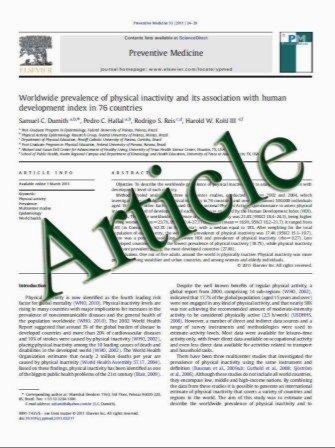The hormonal profile of hip fracture female patients differs from community-dwelling peers over a 1-year follow-up period
- نوع فایل : کتاب
- زبان : انگلیسی
- مؤلف : A. R. Cappola &W. G. Hawkes & N. Blocher & J. Yu-Yahiro & D. Orwig & L. Fredman & R. R. Miller & J. M. Guralnik & J. Magaziner
- چاپ و سال / کشور: 2010
Description
Summary Hormone levels were compared over a 1-year period between elderly women who had sustained a hip fracture and women of similar age and functional ability. Our study suggests progressive hormonal changes that may contribute to severe bone loss during the year following hip fracture. Introduction Alterations in hormones affecting the musculoskeletal system may increase risk of hip fracture or poor postfracture recovery in postmenopausal women. Most studies lack appropriate reference groups, and thus cannot assess the extent to which these alterations are attributable to hip fracture. Methods Women aged .65 years hospitalized for an acute hip fracture (Baltimore Hip Studies, BHS-3; n=162) were age-matched to 324 women enrolled in the Womenپfs Health and Aging Study I, a Baltimore-based cohort with similar functional status to the pre-fracture status of BHS-3 women. Both studies enrolled participants from 1992 to 1995. Insulin-like growth hormone-1 (IGF-1), parathyroid hormone (PTH), 1,25 dihydroxyvitamin D [1,25(OH)2D], and osteocalcin were evaluated at baseline and 2, 6, and 12 months post-fracture, and at baseline and 12 months in the comparison group. Between-group differences in trajectories of each hormone were examined. Results Baseline mean IGF-1 levels were significantly lower in hip fracture patients than the comparison group (75.0 vs. 110.5 ƒتg/dL; p<0.001). Levels increased by 2 months postfracture, but remained significantly lower than those in the comparison group throughout the 12-month follow-up (p< 0.01). Levels of PTH and osteocalcin were similar between groups at baseline, but rose during the year post-fracture to significantly differ from the comparison women (p<0.001). 1,25(OH)2D levels did not differ between the hip fracture and comparison women at any time. Conclusions Older women who have sustained a hip fracture have progressive changes in hormonal milieu that exceed those of women of similar health status during the year following fracture.
Osteoporos Int (2011) 22:339–344 DOI 10.1007/s00198-010-1187-4 Received: 11 November 2009 / Accepted: 17 December 2009 / Published online: 4 March 2010


